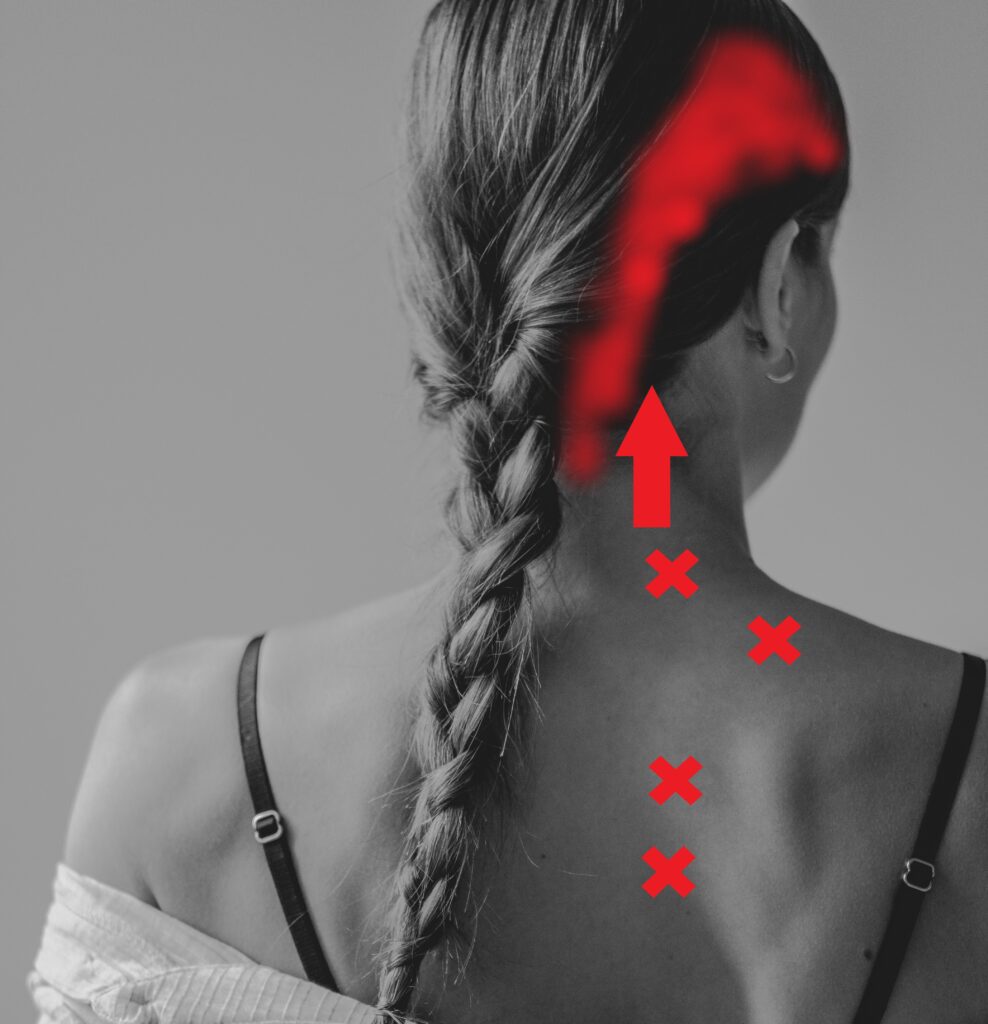The Role of Physiotherapy in the Treatment of Headaches
Everyone experiences a headache from time to time. It is an unpleasant condition that can last from a few hours to several days. Other accompanying symptoms, such as nausea or dizziness, may also be present and can significantly worsen the subjective experience. It’s important to remember that this is a complex issue, involving various medical and healthcare fields. Therefore, the condition should always first be assessed by a general practitioner, who will determine the course of treatment. In the following paragraphs, I will try to describe the causes and solutions of certain types of headaches that can be addressed by a physiotherapist.
Cervicogenic Headache
These are headaches whose cause lies in the cervical spine area. This syndrome is especially common in individuals who often overload the cervical section of the spine, whether through sedentary jobs or heavy, repetitive manual work.
Character of the Pain
The pain often starts at the base of the skull and spreads further up to the top of the head, but can also be dispersed diffusely throughout the whole head. The character of the pain can vary; most often it is described as dull, stabbing, throbbing, or pressing. It is often related to specific positions—most commonly those that involve improper load. The pain can also be triggered by certain head movements. Dizziness, nausea, and even vomiting may also occur.
Causes
The name of this headache type suggests that the cause is hidden in the cervical area—usually in the muscles or the facet joints. Long-term overloading of neck muscles, whether static or with great dynamic activity, leads to the development of painful points (local muscle hypertonus) or functional joint blockages. Pain from these points or blockages can then radiate upwards (to the head) or downwards (between the shoulder blades, into the shoulders, or into the arms).

Physiotherapeutic Treatment
The basis of treatment is to reduce the strain on the muscles in the cervical spine area. This can be achieved by adjusting work posture, following lifestyle recommendations, and especially with targeted physiotherapeutic exercise focused on restoring muscle coordination. In therapy, we then focus on activating and strengthening those muscles that are neglected during static activities.
Tension Headaches
This is the most common type of primary headache. Tension headaches are experienced by 80% of the population at some point in life. They affect adult women and men, as well as children and adolescents. The duration of tension headaches varies. They may occur only a few days per month—in this case, we speak of the episodic type—but they can also trouble a person for more than half the days in a month; then it is considered the chronic type.
Causes
The exact origin of these headaches is unknown, but it is generally believed that the source is overload of the neck, eye movement, and chewing muscles. Psychological stress also plays a significant role and is considered the main cause of the chronic form.
Example Case
All of the above causes of these issues are interconnected. Imagine a typical office worker who spends 8 hours a day in front of a computer screen. Sitting in a static position overloads the neck muscles (even more so if the posture is not ergonomic). Watching the monitor strains the eye movement muscles, which must constantly adjust eye position. If, in addition, there is increased psychological stress (tight deadlines, pressure from superiors or customers), there may be unconscious teeth clenching (overloading the chewing muscles) or shallow breathing using neck muscles instead of the main breathing muscles, again leading to their overload. This creates ideal conditions for the development of tension headaches.
Physiotherapeutic Treatment
As with the first type of headache, ergonomic adjustments and posture improvement are important. In this case, however, it is also appropriate to apply targeted physiotherapeutic exercises to relax the eye movement muscles and the short muscles of the neck. It is also beneficial to teach the client relaxation techniques to relieve muscle and psychological tension.
Conclusion
Headaches are an unpleasant condition that significantly disrupts our daily functioning. Sometimes it may seem that there is no solution. In this article, I have outlined some options for physiotherapeutic management of headaches, but it is always necessary to discuss everything first with your general practitioner.
More information about my physiotherapy practice here.
You can find more articles here.
Zdroje:
Opavský, J. (2011). Bolest v ambulantní praxi. Praha: Maxdorf, s. r. o.
Ambler, Z. (2011). Základy neurologie (7th ed.). Praha: Galén.
Marková, J. (2006). Tenzní Bolesti hlavy. Medicína pro praxi, 6(2), 80-82
Kotas, R. (2013). Tenzní typ bolesti hlavy – patofyziologie a léčba. Bolest, 16(4), 157-160
Fernández-de-las-Peñas, C., & Schoenen, J. (2009). Chronic tension-type headache: what is new? Current Opinion in Neurology, 22(3), 254-261.
Moraska, A. F., Stenerson, L., Butryn N., Krutsch, J. P., Schmiege, S. J., & Mann J. D. (2015). Myofascial trigger point-focused head and neck massage for recurrent tension-type headache: A randomized, placebo-controlled clinical trial. Clinical Journal of Pain, 31(2),159-168.
Catchart, S., Bhullar, N., Immink M., Vedova, Ch. D., & Hayball, J. (2012). Pain sensitivity mediates the relationship between stress and headache intensity in chronic tension-type headache. Pain research & management: the journal of the Canadian Pain Society (journal de la societe canadienne pour le traitement de la Douleur), 17(6), 377-380.